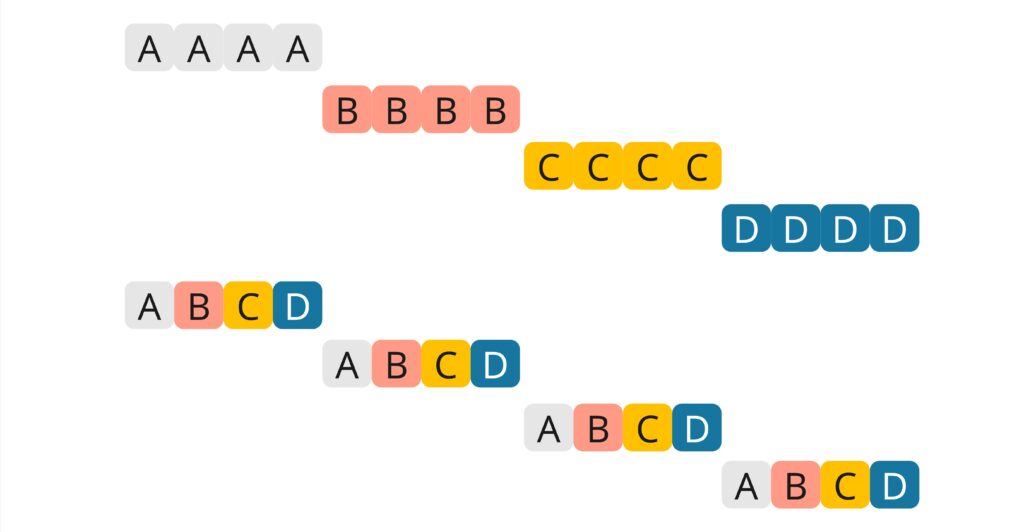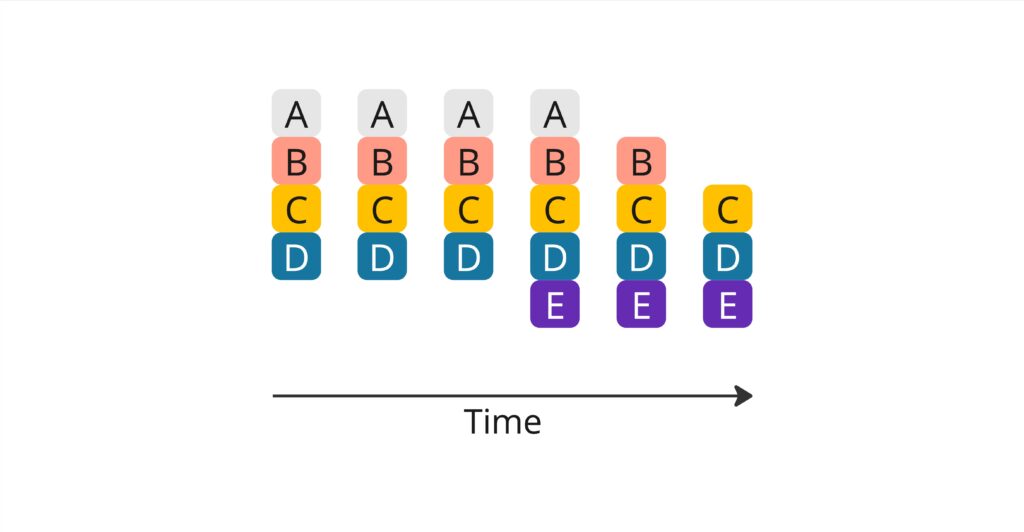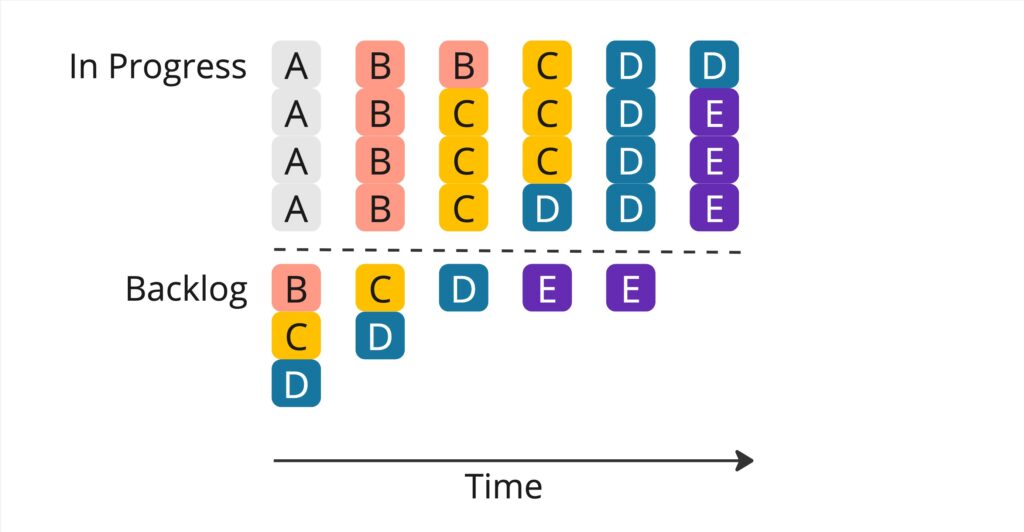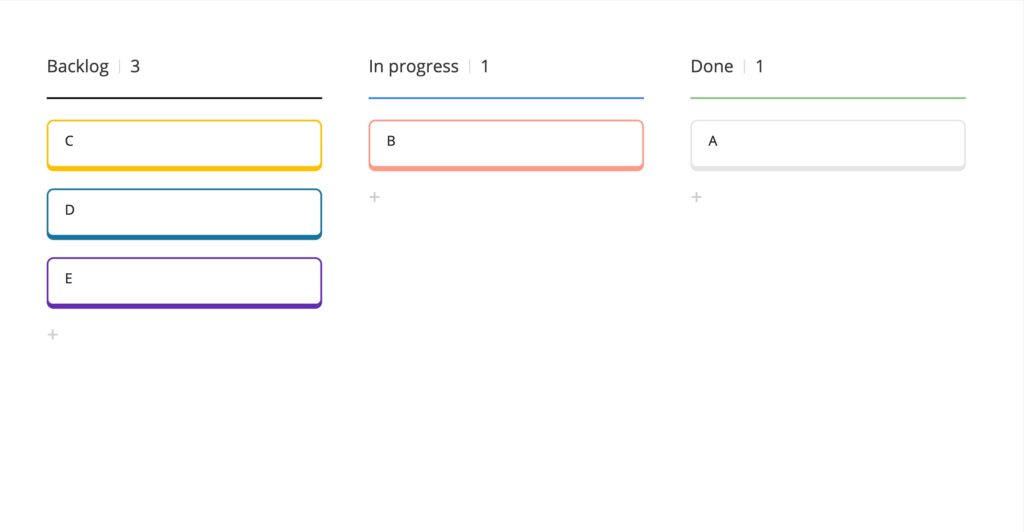
Scope management is important – and sucks
An agency by definition works with clients. Clients want to maximize returns on their investment of working with you. Also, they usually don’t have in-depth knowledge of your area of expertise. So they can’t prioritize. As a result, they want to squeeze as many items into the collaboration as possible.
And then there is you. If you’re like most agency owners, you have an intrinsic motivation to help people, to make them successful. So you, too, might be inclined to squeeze items into the scope.
But here comes the problem. If your scope changes, so will your time and budget. Classical project management. But typically, your clients:
- Don’t want to wait
- Don’t want to pay more
So then either your bottom line takes a hit, because you’re trying to deliver an increased scope on the same budget or you miss your deadlines.
Both are not ideal.
So you have to manage scope consistently. But how do you say no to a client? Well, you might not have to. Enter: Scope Management by limiting work-in-progress (WIP).
2. The Principle of Limiting Work-in-Progress Explained
Limiting work-in-progress means exactly what it says. You only work on a limited number of tasks at any given time.
The origins in Lean and Agile
The idea was first formulated in the Lead methodology, an approach to managing production efficiently that was derived from the Toyota Production System.
It basically says: If you have four steps that are necessary to produce a car, let’s call them A, B, C, D, then you’re better off by producing each car and then going to the next car, instead of batching all steps and finishing all cars at the same time.
Instead of
AAAA, BBBB, CCCC, DDDD
You would be going for
ABCD, ABCD, ABCD, ABCD

The Agile methodology took the concept and applied it to development and other white-collar applications. The idea here is to ship small results quickly (ABCD) then to plan a huge project to be delivered all at once.
What limiting work-in-progress can look like in an agency
Let’s take the example of a full-service agency. You close the client and agree on a scope. ABCD. You start working on all of the things in parallel. In total it’s 4 items, because that’s the capacity available for that client project.
In the 4th week, the client ads a new request to the scope.

You see a few things happening.
- The first items are completed after 4 weeks. (A)
- The added scope item (E) brings you over your capacity limit.
Now, here’s the same project with a work-in-progress limitation. You still work with your 4-task capacity, but now you limit the items that are being worked on at a time to 1. The rest sits in a backlog.

What’s different:
- The first items are completed after 1 week (A).
- The added scope item does not exceed your capacity.
- The overall turnaround time is the same.
3. Benefits of Limiting WIP in Agency Scope Management
There’s a number of great reasons why you should be using work-in-progress limitations to manage your client scope.
Enhanced Focus: Reducing distractions and multitasking
When your team only works on a few items at a time, it’s much easier to deliver high quality work. Multitasking requires high mental efforts to keep on top of things (ask your project managers).
Instead, only working on a small number of items ensures focus and limits distractions.
Predictability: Better forecasting and capacity planning
When you work on only a limited number of tasks or initiatives at a time, it becomes easier to predict their duration and turnaround time.
In addition, you’re able to reliably plan capacity. In above example, the capacity you need in the project is not dependant on what happens in the project. It’s always 4 tasks per week.
Increased Productivity: Faster delivery times and fewer bottlenecks
That’s one of the best selling points towards the client. They get their results faster. While without work-in-progress limitation, they would wait 4 weeks to see results, with work-in-progress limitations they see results starting from week one.
And at the same time, the overall delivery time remains the same.
Unlimited Revisions: The client determines what is finished
You can spend as much time on revisions as the client wants. Because you won’t start the next item before the current one is finished. This will have a built-in limiting effect on client feedback loops. And you can still sell unlimited revisions to your clients.
Client Experience: Aligned Expectations
That’s another nice effect: Instead of the constant “We can’t do that without talking about budget” and “That’s not in scope”, you can simply say: Yes.
It’s important to introduce the client to the limited work-in-progress operating model at the very beginning. Ideally already during the sales process, latest in the kickoff.
Once they know and understand the concept, there are multiple benefits (beyond the quicker turnaround time):
- They can add unlimited items to the backlog
- They can re-prioritize items as often as they want as long as they’re not yet in progress.
Practical Steps to Use WIP Limits
If you want to use WIP limites to manage scope, there are three fundamental things you need.
Train your team on the idea
Your team needs to understand and embrace the work in progress idea.
While it helps with capacity planning it means a new way of working.
Depending on the structure of your organisation and the nature of your projects, it might mean less predictability for functional experts. Simply because it’s not as plannable what specific task will happen next.
Sell your clients on the idea
The next time you close a new client, sell the concept right from the start The benefits for the client in a nutshell
- Unlimited additions to the scope
- Unlimited revisions
- Faster turnaround
Use a visual tool to manage work-in-progress
To communicate backlog and current WIP clearly, you need a visual tool. The simplest setup is a Kanban board, with a column for the backlog, one column for work in progress, and a column for done.

This will make communicating and using the framework easy and effective for both you and you client.
Addressing Common Concerns and Objections
Implementing this approach might feel daunting or even impossible. Here are some typical concerns and how to tackle them.
Our clients won’t accept the wait time
Typically clients want everything at once. And the intuitively fastest way of getting there is starting everything immediately. As we’ve seen above, that’s not true. It’s critical to explain the concept to clients very early. Use visuals to make it easier to understand.
Dealing with client pressure and urgent requests
Some client use a lot of pressure or have many urgent requests. If something can’t go to the backlog, you’ll have to pause another thing.
The client can opt to park some current work in favour of something urgent. But now it’s the client that carries the downside of the decision (wait) not you (exceeding scope).
To prevent clients from switching the currently active pieces of work to often, you could come up with a minimum interval of 1 week. That’s the frequency in which items can be changed.
If that feels to rigid, then keep it more flexible. But be disciplined about the scope of items in progress.
We can’t complete items right away due to wait times
Often your work relies on other parties’ input to be finished. This could be other agencies or the clients themselves. Think briefings, feedback or approvals.
There are two ways to deal with it. If the wait times are short, i.e. a day or so, or are fully in control of the client, you don’t account for it separately. If the client needs three days to give feedback on a piece of work, then that just extends the time the item takes to be completed by three days. You don’t start working on another piece of work.
If the wait times are larger and out of the client’s control, you can implement a “Waiting” column on the board. Move all initiatives there that are currently waiting on input. Important:
- It still means that you can’t work on more than X activities at a time.
- An item that sits in waiting is actually waiting. Don’t work on it.
- If the input or whatever else you’re waiting on becomes available, the item still has to wait until your WIP column has capacity again.
- Before backlog items are pulled into Work-in-Progress, always check if there are items in “Waiting” that can be worked on.
Managing capacity over multiple functions is too complex
If multiple functional roles are involved to work on the account, the flexible backlog planning can become a problem. After all, you don’t know anymore when you need the ads team, or the strategist, or the web-designer, because the client can shuffle around items.
Three things can help:
- Consistently share backlogs from all client project with the functions, so they know what’s still coming up. Integrating the planning over different functions is critical. Host a weekly meeting to discuss all backlogs by function.
- Use freelancers to cover capacity peaks
- Implement a lead time for scope changes. For example, you could agree with the client that as a rule, the backlog can only be changed with a one or two week lead time. This way you avoid last minute changes (where all of a sudden you need capacity in the SEO team instead of the paid media team)
Over time, as this framework is rolled out across clients, we see that the capacity planning efforts are quite manageable.
Integrating WIP Limits with Other Scope Management Techniques
Limiting Work-in-Progress is a powerful tool. Even more so when combines with other scope management tools.
How WIP complements other management methods like clear communication and documentation
It is still advisable to define a written scope of work at the outset of the collaboration with the clients. This will align yours and the clients’ understanding around expectations for the collaboration.
In addition, a Kanban board won’t replace regular meetings with your clients. Use the Kanban board as a tool to structure your discussions, not to replace them.
Balancing flexibility and structure in scope management
Like with all scope management efforts, it is critical to find a human balance between structure and flexibility. After all, clients hire agencies because they need trusted allies that help them solve their problems. If you just operate based on structure, you’ll miss out on that critical aspect.
Conclusion
Agency scope management is one of the most difficult things to master as you scale your agency. But also amongst the most impactful.
Using work-in-progress limitations is an effective way of aligning expectations with your client, safe-guarding your team from scope creep and creating a mutual beneficial relationship.